Venus flytrap care and growing guide: expert tips for these carnivorous plants
A Venus flytrap is a fun addition to an indoor or outdoor garden – we explain all you need to know for success
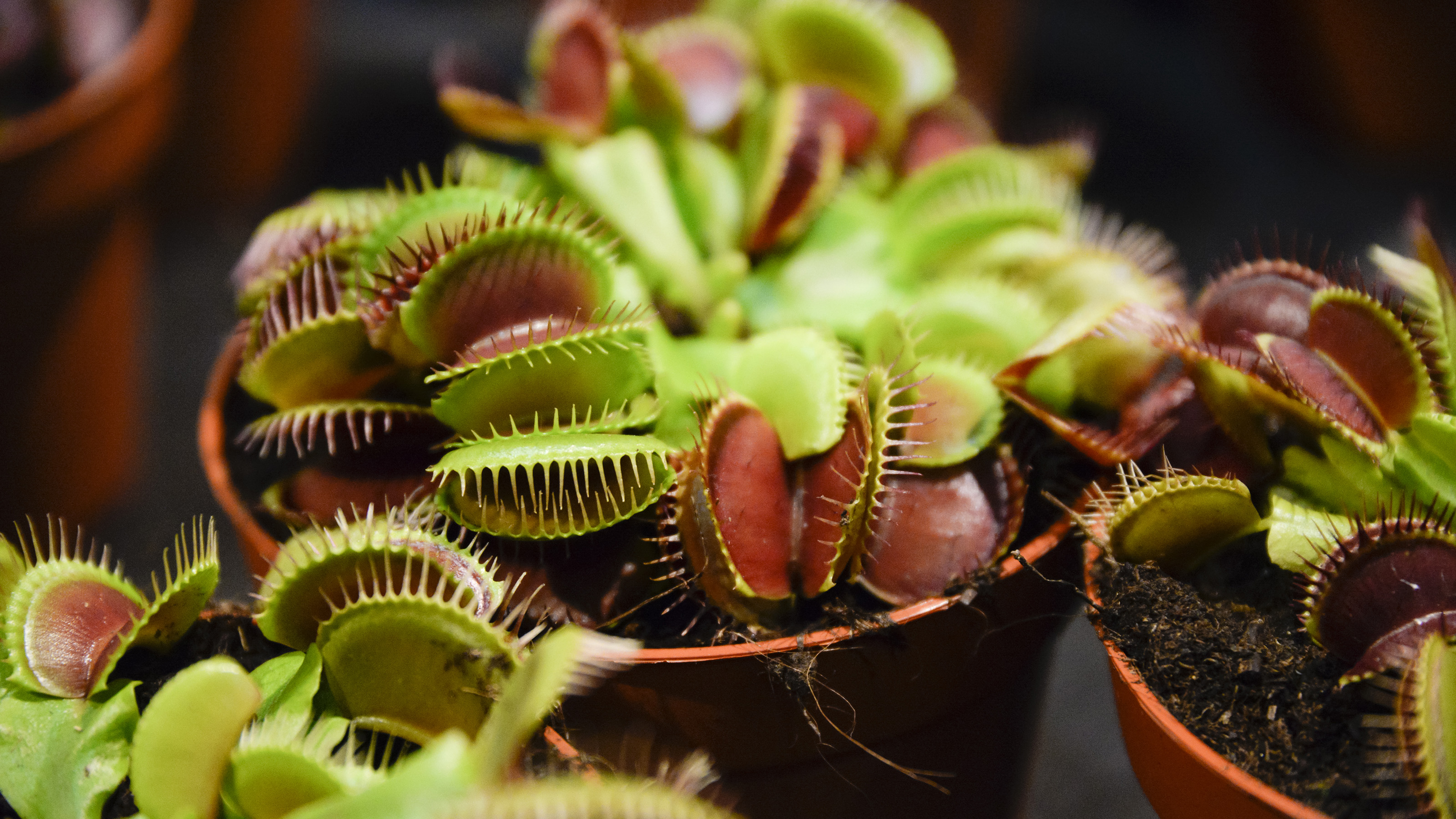

The Venus flytrap (Dionaea muscipula) is an intriguing carnivorous plant that's native to the United States. It gets its name from its habit of luring flies and other insects with its nectar, then snapping shut to trap them between its spiny-edged leaves.
It’s a specialist plant that has grown massively in popularity. Forming mats that reach 4in (10cm), this strange yet beautiful specimen takes up little room and can be grown as a houseplant. It's also perfect for containers outside in summer, and looks great planted in a group with other carnivorous or bog plants as part of an impressive and varied collection.
Sadly, Venus flytraps have now become endangered in the wild since the 1980s due to habitat loss and illegal harvesting. But, with the right specialist care, Venus flytraps could live happily as indoor plants on your windowsill for 20 to 30 years.
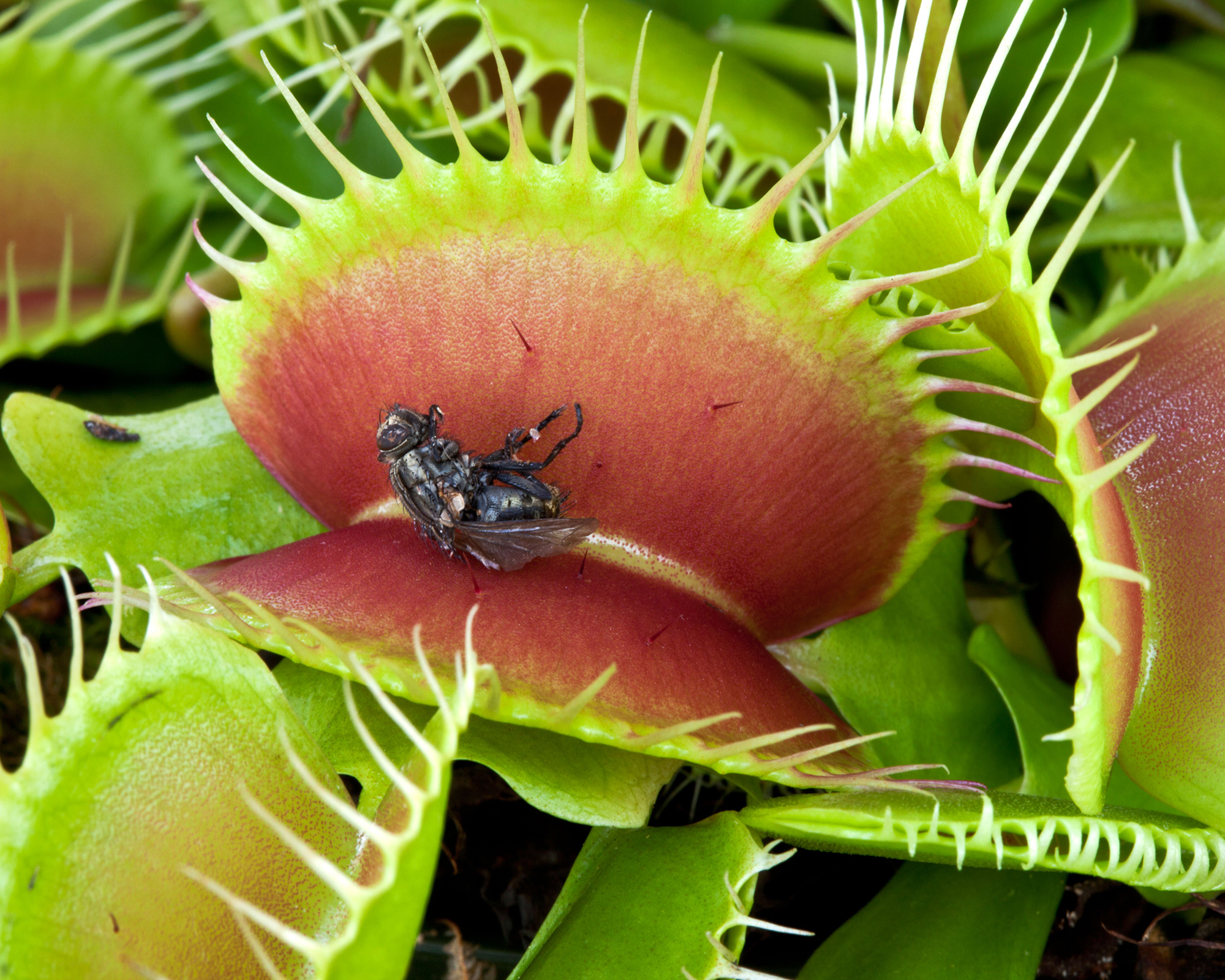
Venus flytraps can be grown indoors and out
3 essential Venus flytrap care tips to follow
If you're growing a Venus flytrap as part of your indoor garden ideas, you will need to mimic the conditions it's used to in its natural habitat.
This includes placing it in the right light, understanding its watering and feeding habits, as well as other top tips for maintaining good plant health.
1. Provide the correct light conditions
It’s vital to place your Venus flytrap where it gets plenty of sunlight, but no more than four hours of direct sun per day. They're not low-light indoor plants and won’t thrive in shade, so find it a brightly-lit spot on an east, west, or south-facing windowsill. Or, you could try them as conservatory plants.
During the growing period, plants need 12 hours of light so they can photosynthesize. It’s easy to tell if your Venus flytrap is happy, as its green leaves will color up red.
If you don’t have a bright spot for your plant, you could grow it inside under a specialist indoor plant light.
And, although it’s ideal as a houseplant, your Venus flytrap will be happy outside in your backyard in a container during the growing season (spring-summer), especially if it's planted with a group of other carnivorous or bog plants like sarracenia (Trumpet pitchers).
Follow the same rules as for indoors – put the plant in a sunny position where it gets no more than four hours of direct sun a day.
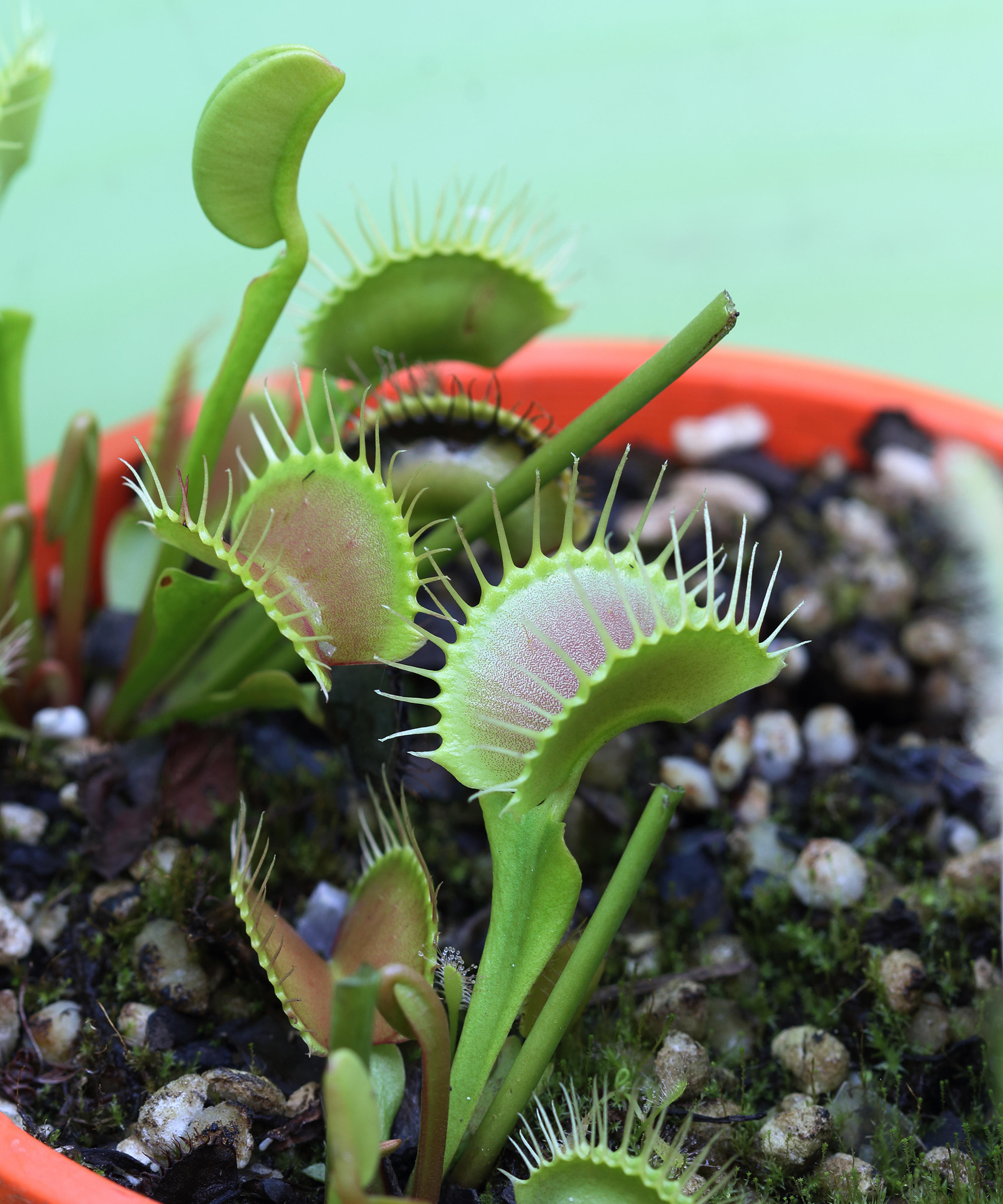
Venus flytraps like plenty of light
2. Ensure there's sufficient humidity
As natives of the bogs and swamplands of North and South Carolina in the Eastern USA, Venus flytraps enjoy high humidity and moist, acidic soil. To keep them happy it’s essential to keep them damp, to mimic their natural habitat.
Like orchids and boston ferns, they will suffer if there's a lack of humidity. So, think about growing yours as a kitchen plant or as a plant for your bathroom. You can also place the plant pot in a tray filled with water and pebbles, so plants can absorb the water they need and bask in the surrounding humidity.
From spring until the end of summer, they need plenty of water as they’re in growth mode, catching insects, photosynthesizing and flowering. Watering plants during this period should occur weekly, letting water drain out of the bottom of the pot. Your plant’s soil should be moist, but not soaked. Use rainwater rather than tap water if possible.
Like prayer plants and kalanchoes, Venus flytraps need much less water when they’re dormant over the winter months. So, remove them from their pebble tray, put them in an unheated-but-light place, and hand-water around once every two weeks, just to keep plants slightly damp.
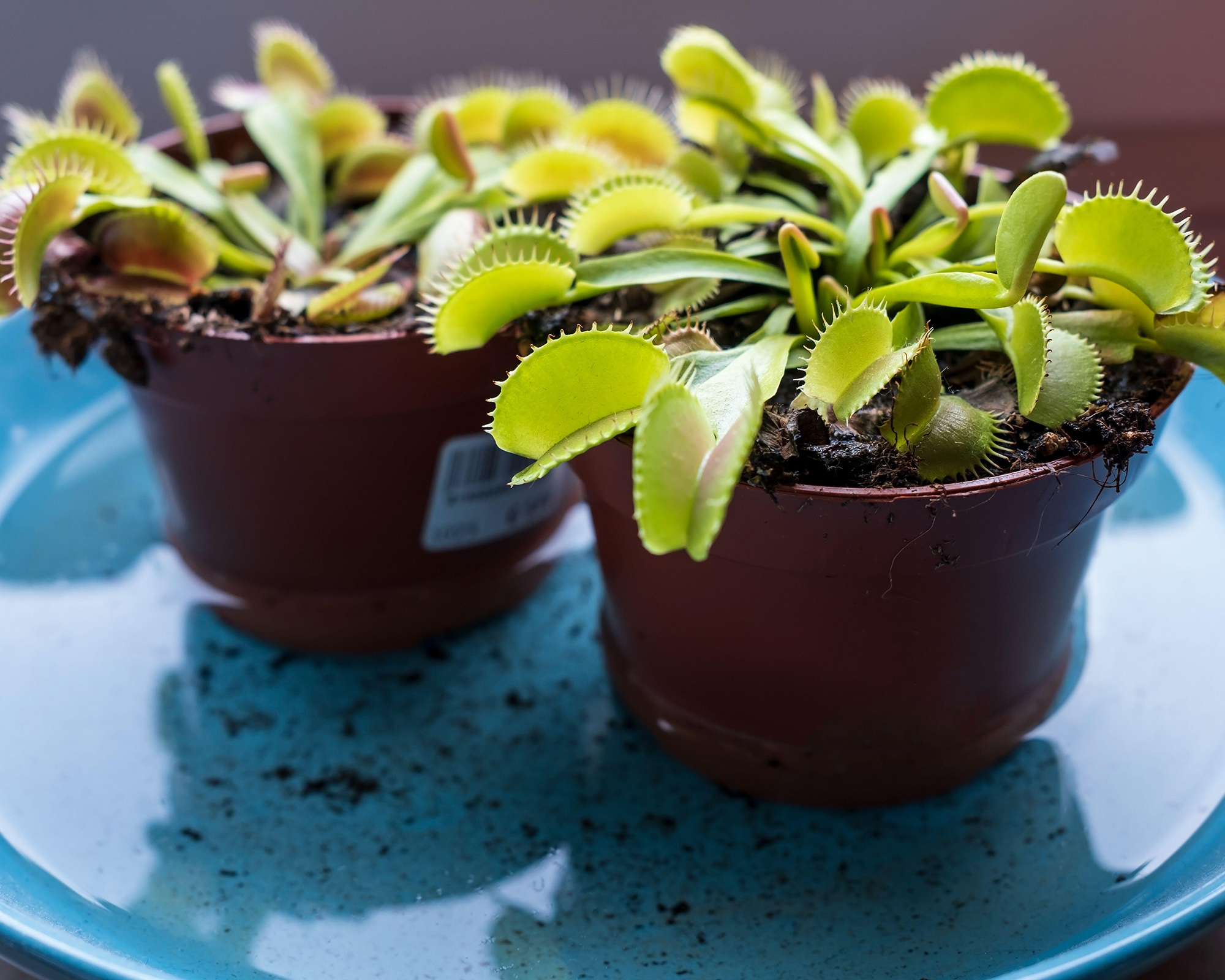
Keep your plant's soil moist but not soaked
3. Feed them correctly
Venus Flytrap World advises that you should never fertilize outdoor Venus flytraps. They will catch their own ‘food.’
For plants inside, feed them once a month. ‘It’s easy,’ they say. ‘Just grab a live insect and drop it off inside the trap.’
You won't need to add any fertilizer to the soil, as they are used to nutrient-poor soil in their natural habitat.
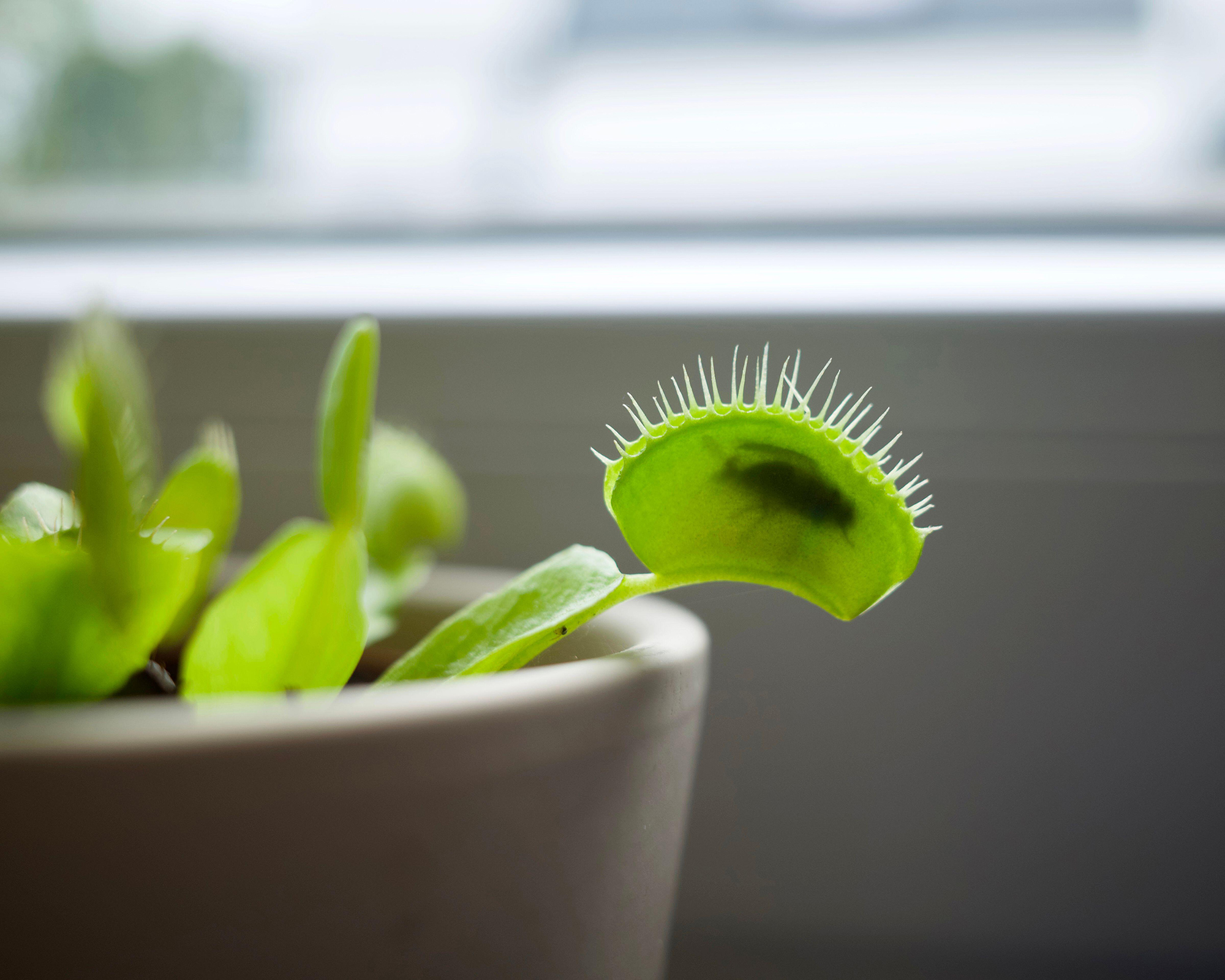
Venus flytraps get their food from catching insects
Should you remove Venus flytrap flowers?
The flowers the plants produce can actually weaken them, so it's best to deadhead the blooms.
Matthew Soper of Hampshire Carnivorous Plants nursery, and Master Grower at Hampton Court Flower Show 2018, says that the key to success is to nip off flowers as they’re produced, to produce a stronger plant.
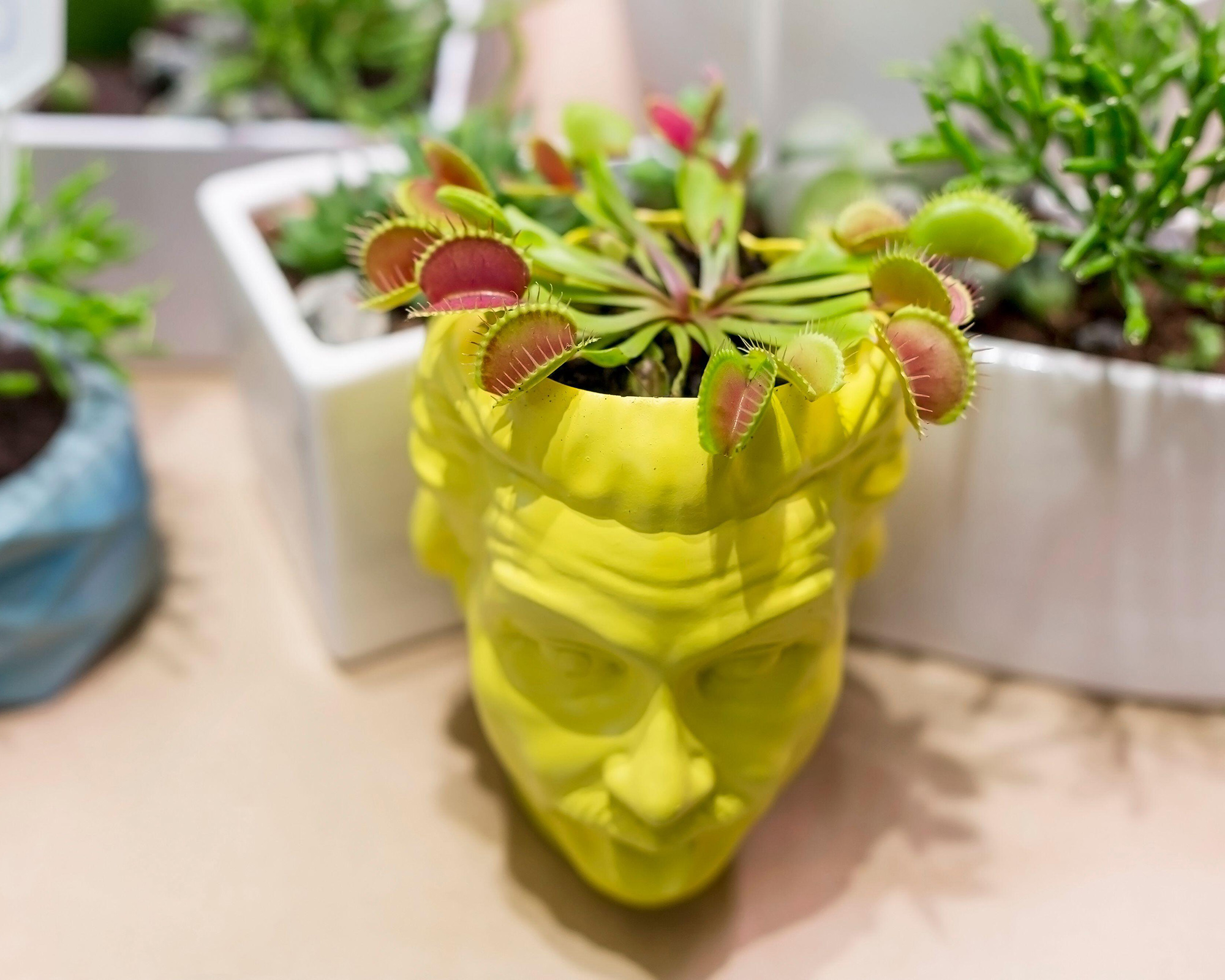
These plants are a fascinating addition to indoor gardens
The best soil for Venus flytraps
Don’t use ordinary compost for your flytrap as it’s far too rich in nutrients, which will burn the roots and prove fatal to your plant.
The RHS says that when you buy your flytrap, it should be potted in the correct specialist carnivorous compost, such as this Carnivorous Plant Soil from The Killer Plant Company available at Amazon.
It won’t need re-potting for at least a year, when it’s grown significantly. When it comes to re-potting, continue to use a low-nutrient compost specially formulated for carnivorous plants.
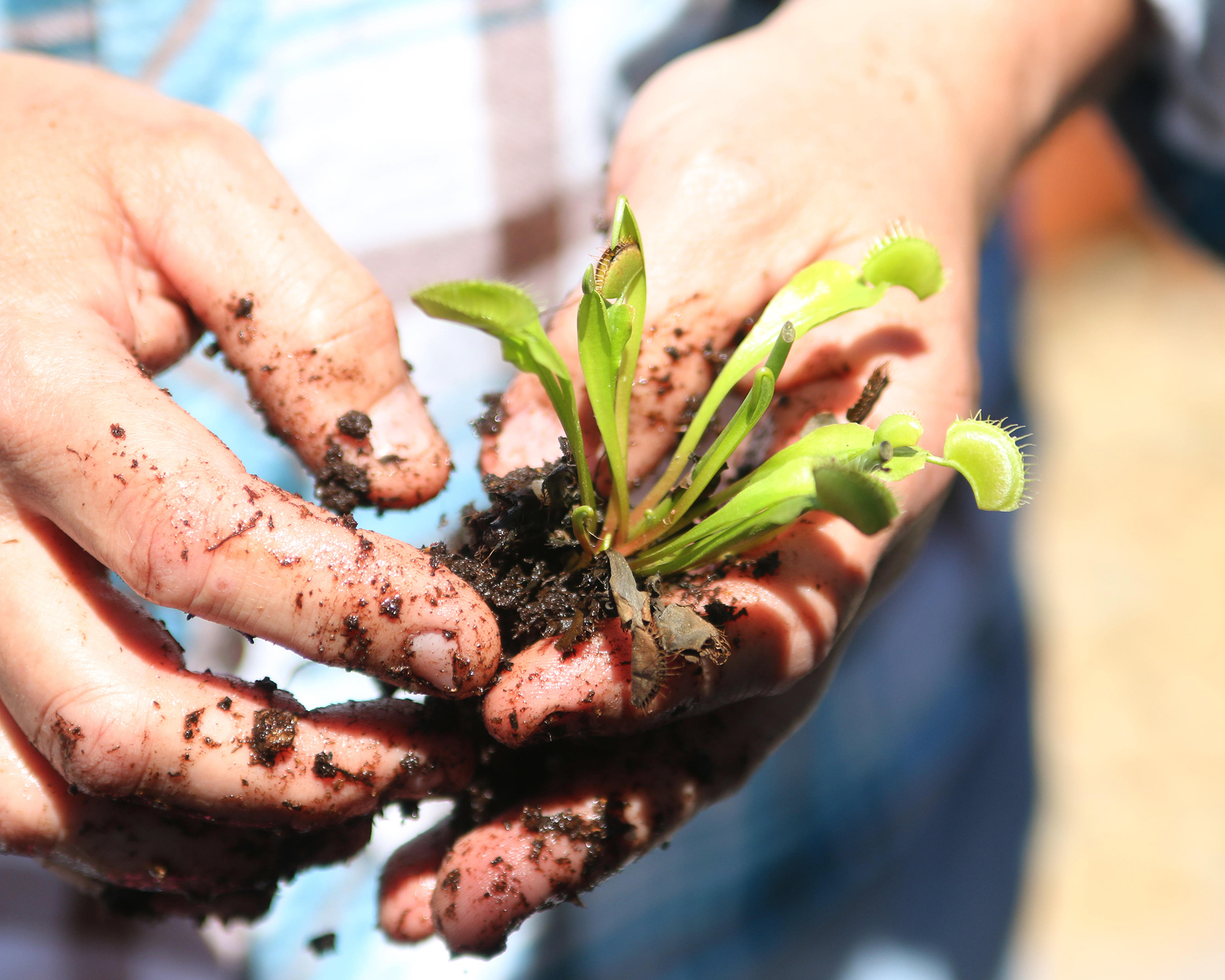
Venus flytraps do not like nutrient-rich soil
Key problems with Venus flytraps
In spring, sap-sucking insects such as aphids (greenfly) – which can appear on Gardenia plants, too – or mealy bugs (small larvae with a white woolly covering) can be a problem for plants growing outside. You may notice distorted edges of leaves and large groups of insects on the foliage. It’s best to pick them off, or encourage natural predators like birds, before resorting to chemical controls.
Fungal or bacterial diseases like botrytis, a brownish-gray soft mold, can result from overwatering indoor plants. Pick off affected foliage, reduce humidity, and make sure there’s plenty of airflow around the plants. It’s also best to trim off the Venus flytrap’s dead leaves as they turn brown, avoiding hygiene problems which could give rise to botrytis.
How do you propagate a Venus flytrap?
You can grow a Venus flytrap from seed, but seedlings grow slowly and take three to five years to mature. You can also take leaf cuttings, removing them from the rhizome. Pot up in sand, and cover with a plastic bag.
Like with calathea propagation, the quickest method for propagating a Venus flytrap is division, in late winter to early summer. Select a large plant, and divide it into several clumps, making sure they all have roots. Re-pot in specialist compost, then water.
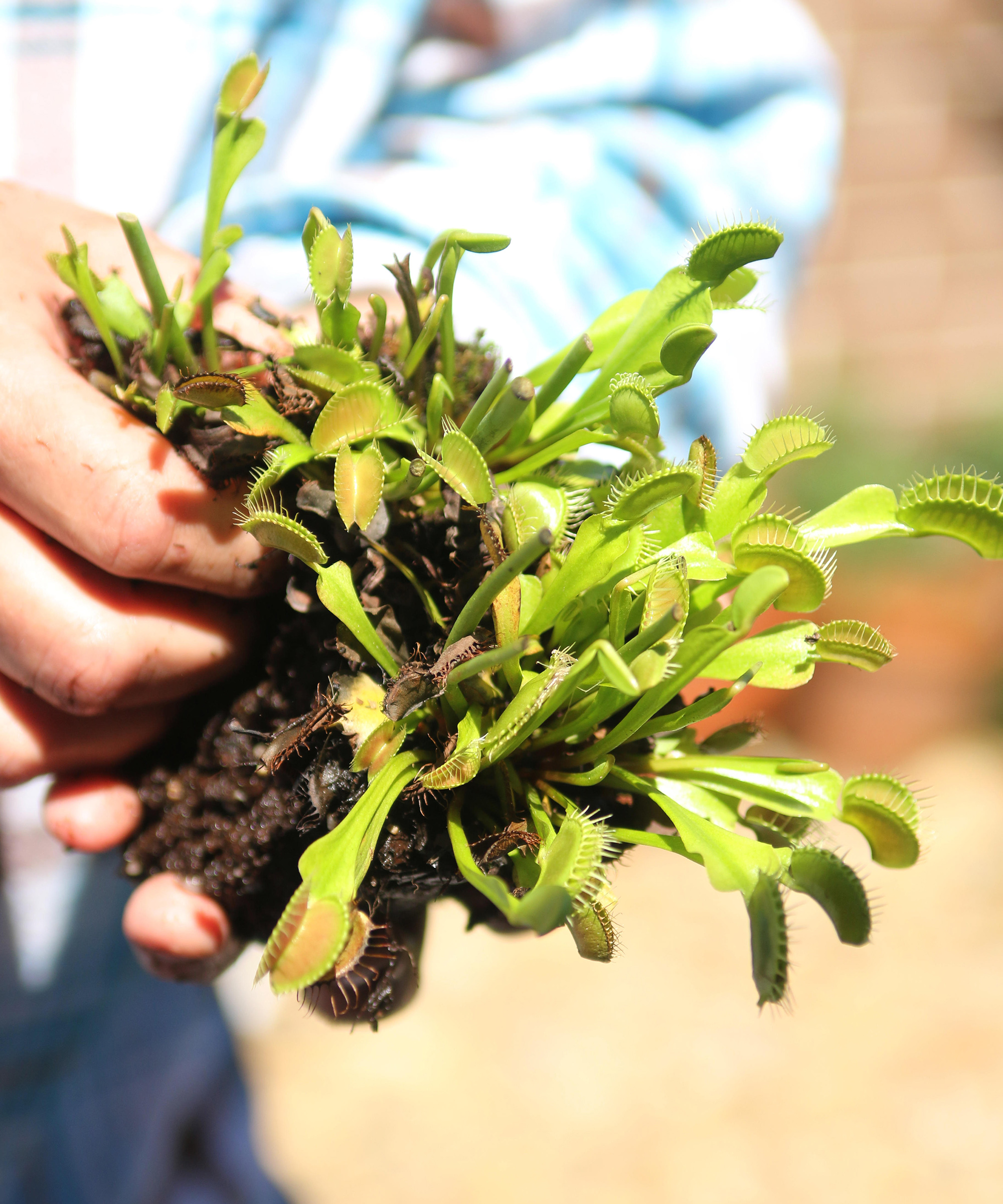
Propagate Venus flytraps by division for the quickest results
What happens if a Venus flytrap bites you?
Nothing much happens if one of these plants 'bites' you. If you put the tip of your finger in between the Venus flytrap’s bug-trapping leaves, it will shut, but it won’t hurt at all. It will only feel like a gentle tickling sensation since its 'teeth' are really more like a brush.
It’s tempting to do this, but you should avoid setting off the traps by touching them yourself, as it weakens the plant. Each trap only activates two to three times before it dies back.
The plant needs the nutrients from insects for its energy to grow, and if the plant opens and closes without receiving an insect, it will get depleted over time.
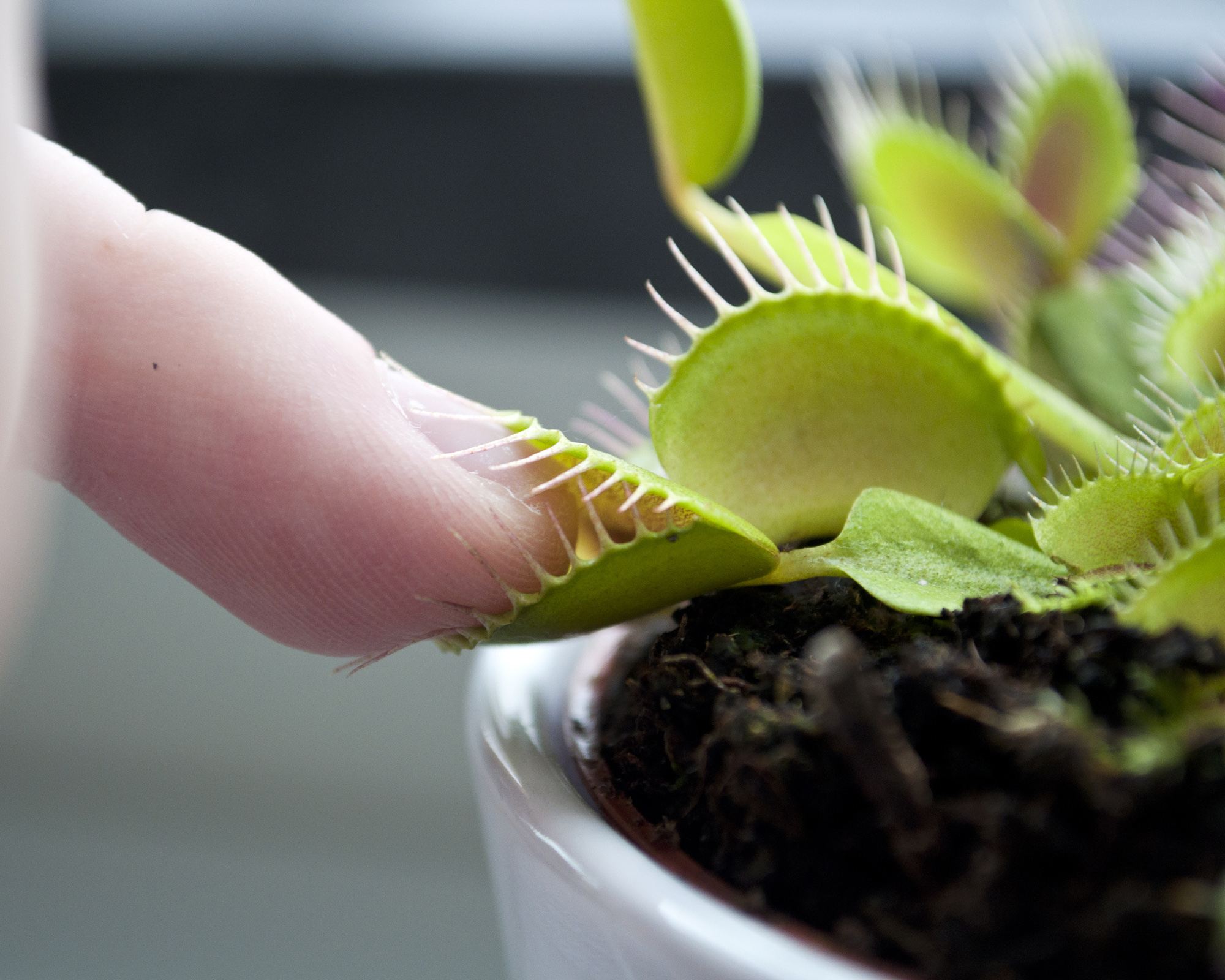
A bite from a Venus flytrap won't hurt
Where to buy Venus flytraps
If you're tempted to buy one of these plants for your home, these quicklinks are a good place to start:
Shop Venus flytraps in the US:
- Shop Venus flytraps at Amazon
- Shop Venus flytraps at Carolina
- Shop Venus flytraps at Carnivorous Plant Nursery
Shop Venus flytraps in the UK:

Geraldine is a gardener and garden writer, who has worked for over 12 years in historic public gardens and private gardens around London. She has written articles for Easy Gardens, Which? Gardening and Women’s Weekly Gardening Special magazines and for gardeningetc.com. She also edited the book ‘Britain’s Favourite Plants’ for the RHS.
